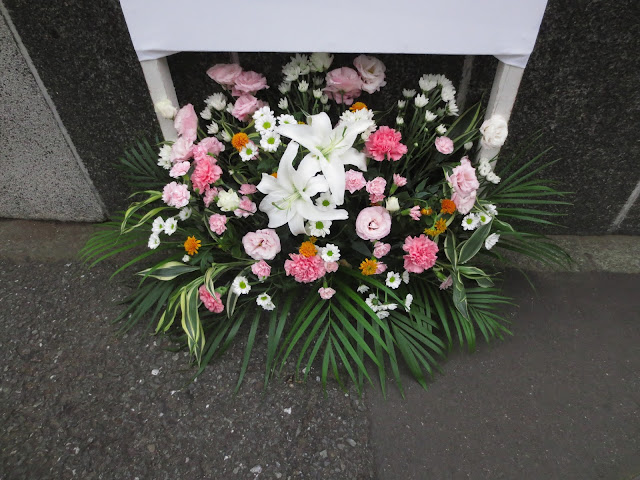Tuesday, August 27, 2013
Shirahama lyfe
making a big ol' pot of ishikari nabe (onions, matsutake, bamboo, sweet potato, carrots + dashi and in the lower right mixture of sake, miso, and mirin)
instant mochi in my toaster oven
finished ishikari nabe with salmon spinach, shrimp and scallops added in
my hibiscus!
it's hard to see but the dragon flies are swarming right now, and this field was covered with them.
the lobby of an abandoned hotel.
looking out across the bay to kamitonda (the next northern town)
Thursday, August 22, 2013
Los Angeles-Tokyo
The international terminal at LAX.
Large billboard sized photograph of asian tourist with nice manicure and nice dslr taking a photo of the Griffeths Observatory from down town LA, as if that were possible
Spying on LA
The Hindu meal aboard Singapore Airlines...not too shabby but why is one container empty?
The first and stupidest photo taken in Tokyo
The Keio Plaza hotel in all its blocky 90's glory
A dinner held at the Keio Plaza
After being shut up in the Keio Plaza hotel in conference rooms without windows, I decided to make a brief sojourn to the Meiji Jingu near Harajuku. When I arrived the grounds were to close in about 45 mins and I had missed seeing what used to be the private gardens of a daimyo who predated the Meiji by an hour. The approach was long and gravelly-typical of most imperial sites I've been too. Mostly it's just the sound of cicadas, and sneakers of gravel that you'll hear in the summer, that and the cries of exuberant tourists drawing each other's attention to the novel features of whatever site you find yourself at.
The entry way to Meiji Jingu. Walking through the shrine grounds, the air was heavily scented with Japanese cedar, or hinoki. Most of the buildings here were impressively built from solid pieces of this wood, a kind of subtle decadence. Most shrines you find in Japan are heavily lacquered with white, vermilion and dark green paint. The only visible paint were the white accents, which are shown in the above photo on the ends of decorative roof beams just below the awning.
I've started to notice the light in many of my photos look the same, a kind of milky pale filter over everything... I think it has something to do with the quality of light here and the Japanese preference for a gray palette. Everything seems to be pale and pastel in contemporary Japanese design and architecture, it's difficult to find contrast. Although, contrast is present and deftly accomplished in traditional expression, for example the differences between the Higashi-shinjuku subway sign and the Meiji jingu approach. Overall though, there seems to be a blue mist in the air everywhere I go, maybe from the presence of volcanic activity? Everything is tinted bluer or colder here it seems, as opposed to someplace like California where the light is tinted warmer. In my understanding the concept of blue relates more to paleness, like moonlight, pale skin, ghostliness rather than the strong color of the ocean or the summer sky, or sapphires per se.
A series of ikebana exhibits on the shrine grounds:
This kimono was used during one of the imperial weddings at the Meiji jingu...or at least that's what I think the sign said.
For when you need commes de garcons on the go!
baberque pork
My kitchen
Subscribe to:
Posts (Atom)














































